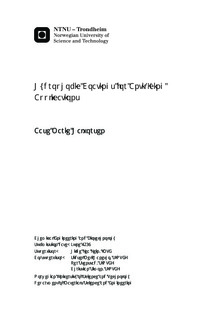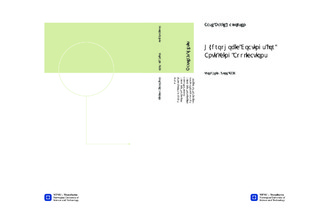| dc.description.abstract | The motivation for developing environmentally friendly and inexpensive solutions for anti-icing is high. The oil industry is heading toward arctic regions and the development of improved anti-icing techniques demands greater attention. In literature there are conflicting theories regarding the mechanism of icing, and the need for fabricating durable anti-icing coatings is brought into focus. Silane-based hydrophobic coatings are believed to have great potential and may be the future solution. In order to create hydrophobic coatings (contact angles > 90 °), researchers have been inspired by the surface structure of lotus leaves, on which a roughness on nano and micrometer scale increases the contact angle and promotes repellency of water droplets.Based on sol-gel synthesis of the commercial precursors trimethoxy(3,3,3-trifluoro propyl)silane (gamma) and 1H,1H,2H,2H-perfluorooctyl triethoxysilane (beta), together with trichloro(1H,1H,2H,2H-perfluorooctyl)silane (FOTS) used in pure condition, fluoro silane coatings have been deposited on silicon substrates by spin coating, liquid phase deposition (LPD) and dip coating. Different solvent/silane molar ratios (S) and pH values were varied in the sols, and different parameters like multiple layers (spin coating), curing temperature (room temperature vs. 150 °C), substrate pretreatments (smooth vs. rough), liquid exposure time (LPD), and holding time and withdrawal speed (dip coating) were studied.Sol characterization showed that the viscosity in the fresh sols varied from 0.72 ± 0.03 mPa·s 10.7 ± 0.4 mPa·s, and that the viscosity was dependent on the type of precursor, pH and solvent content. The pH affected the sol hydrolysis and condensation rates, as indicated by FTIR and 29Si NMR. At acidic conditions the hydrolysis was relatively fast and condensed species like T2 and T3 were shown to develop with aging. Increased pH promoted a slow hydrolysis and a more condensation dominating reaction, as indicated by faster gelation.Coating characterizations by AFM, white light interferometer, profilometer and SEM were conducted to relate the roughness, which was present in the form of micrometer scale pyramids produced by KOH etching and also nanometer scale particles formed at alkaline conditions, to the hydrophobicity. The contact angles of the coatings with water varied from 71.2 ° 129.4 ° , indicating hydrophilic as well as hydrophobic behavior. De-icing tests signified that the de-icing properties for the fluoro silane coatings were good compared to the uncoated reference substrates. Coatings deposited on rough surfaces where shown to cure easily, have greater surface roughness and increased hydrophobicity compared to coatings deposited on smooth surfaces. Interestingly, some of the hydrophilic coatings were shown to provide the best anti-icing/icephobic properties. | nb_NO |

